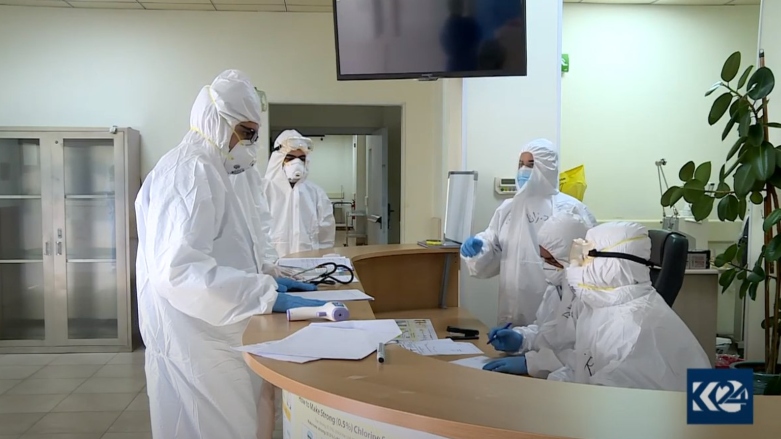COVID-19: Kurdistan Region registers over 730 new cases, 20 deaths

ERBIL (Kurdistan 24) – The Kurdistan Region’s Health Ministry announced over 730 new cases along with more than 20 deaths in the past 24 hours.
The region’s health ministry said it had conducted 4,853 tests in the last 24 hours, with 735 returning positive.
Since the beginning of the outbreak in the autonomous region in early March, the region has conducted 456,994 tests.
According to the health figures, there have been over 46,000 virus cases across the Kurdistan Region, including about 30,000 recoveries and 1,693 deaths.
Duhok province, once touted for its victory over COVID-19, has seen a notable increase in the rate of fatalities. Duhok has also continued to record a high number of daily infections, often larger than the rest of the Kurdistan Region’s provinces.
The Duhok Health Director, Nizar Esmat, said in a press conference on Sunday that “the death rate in Duhok has increased to two percent” due to “an increase in the number of infections recently throughout the province, in addition to a delay in receiving treatment.”
The press briefing came after a meeting between top provincial health officials.
Esmat also explained that the provincial government would dedicate 20 more intensive care rooms for coronavirus patients and send more medical professionals to Duhok’s Azadi Hospital to treat the disease.
The health official also noted that the governor of Duhok is encouraging the production of supplemental oxygen.
So far, 568 doctors and health workers have been infected with the coronavirus in Duhok, four of whom have died, including a doctor.
The Kurdistan Region and Iraq have been recording an increasingly higher number of cases in recent months amid relaxed lockdown measures and tough economic conditions.
The coronavirus has infected more than 32.8 million people worldwide and killed near one million, according to Johns Hopkins University’s database. The actual figures could be dramatically higher due to insufficient testing capabilities or underreporting.
Editing by Karzan Sulaivany
